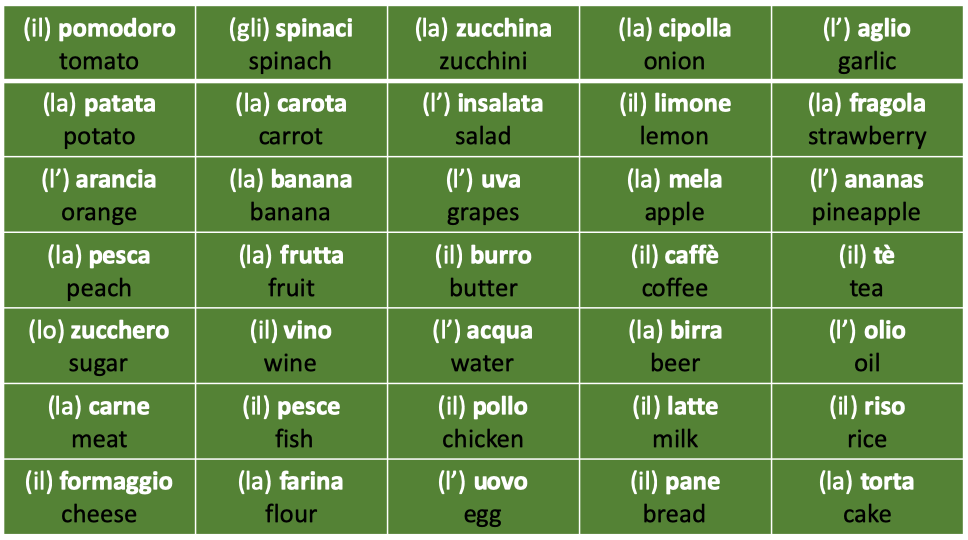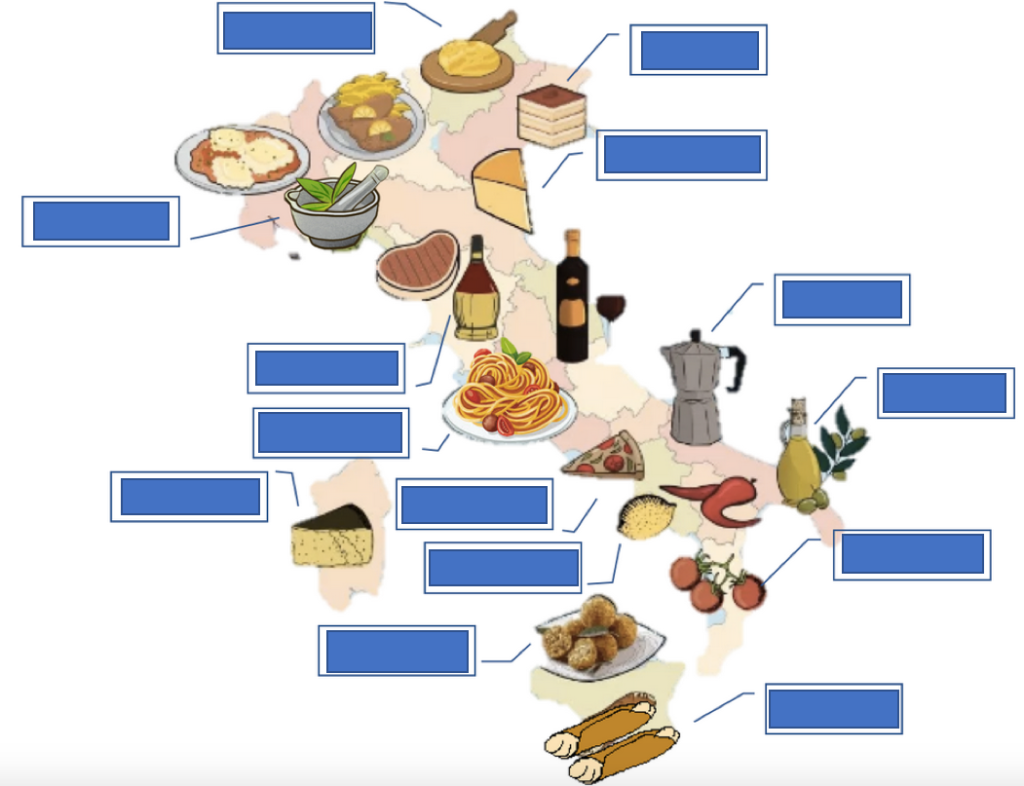“Il” and the other articles
| Listen to the audio file and find the corresponding foods and beverages below.
Then click here for the answers.
|
| Food and beverage The world loves Italian food and Italian food words are commonly used in English. The following food nouns are untranslatable and they are just a few of the Italian food words used in English. Just notice that some words have been adopted into English as a singular, but gnocchi, spaghetti, ravioli, cannoli, biscotti, etc. are plural. We eat more than one at a time, right? The singular forms are (lo) gnocco, (lo) spaghetto, (il) raviolo, (il) cannolo, (il) biscotto, etc. Notice that all the nouns are preceded by a definite article (=the), grammar point covered in this chapter. To practice on vocabulary and pronunciation, use Quizlet.  More food words To practice on vocabulary and pronunciation, use Quizlet.  The above words (with the exception of [gli] spinaci) are all singular. You can make them plural following the rules studied in Unità 3. Just remember that (l’) uovo sing. and m. (egg) becomes (le) uova pl. and f. (eggs). |
Tasks
|
Practice
Previous> C’è, ci sono
Next > Mi piace
